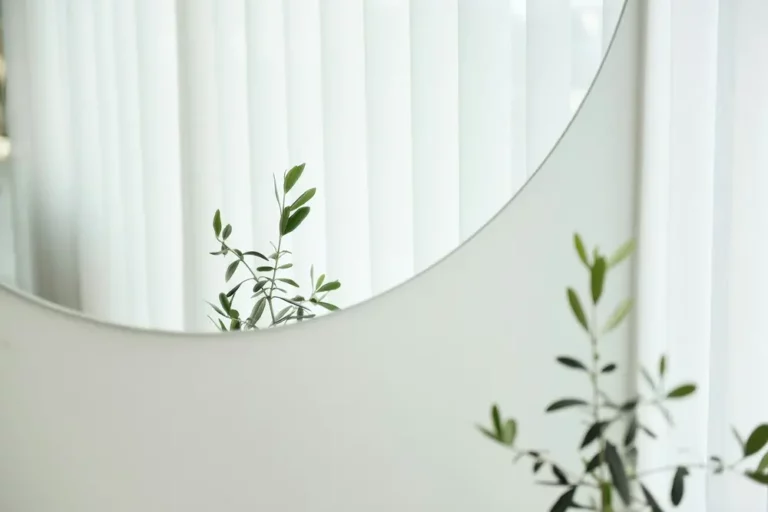Shower Wait Time: How Long After Painting Your Bathroom?
I recently took on the task of giving my bathroom a fresh coat of paint. The transformation was incredible, but it left me with a pressing question: How long do I need to wait before I can enjoy a steamy shower without ruining my hard work? It’s a common dilemma, and I’ve seen many folks rush into it only to face the disappointment of peeling paint.
So, I dove into the depths of paint drying and curing processes to save you from the same fate. Whether you’re using latex, oil-based, or any other type of paint, I’ve got the scoop on the ideal waiting times. Let’s ensure your bathroom makeover remains flawless, shall we?
Understanding Paint Dry and Cure Times
When I began my bathroom makeover, one question loomed large: How soon after painting can I take a shower without ruining my hard work? To answer this, it’s crucial to grasp the concepts of paint drying and curing times. These aren’t just fancy terms painters throw around; they’re key to a successful paint job.
Difference Between Dry Time and Cure Time
So, what’s the difference between the two? Dry time is pretty straightforward—it’s the period after you’ve applied the paint when it becomes touch-dry, meaning it won’t smudge upon light contact. However, this doesn’t mean it’s ready to withstand the steam from a hot shower. That’s where cure time comes into play. Cure time is longer, as it’s the time required for paint to fully harden and develop its maximum durability. During this phase, the paint’s molecules bond together, creating a protective surface that’s moisture-resistant.
For example, latex paints have a relatively fast dry time, usually around an hour, but they can take up to 4 weeks to fully cure. Oil-based paints, on the other hand, take longer to dry, about 6-8 hours, but their cure time is roughly similar, if not a bit longer.
Factors Affecting Drying and Curing
Several factors can influence how quickly your freshly painted bathroom dries and cures. Understanding these can help you create the optimal conditions for your paint job to last.
- Temperature and Humidity: These are the big ones. Paint dries best at room temperature with low to moderate humidity. If it’s too cold or too humid, the paint will take longer to dry and cure.
- Airflow: Good ventilation is crucial for speeding up the drying process. I’ve learned that opening windows and doors and using fans can significantly help. But remember, the airflow should be clean—no dust or debris to stick to the wet paint.
- Type of Paint: As I mentioned earlier, different paints have different dry and cure times. Water-based paints dry faster but can be sensitive to humidity, while oil-based paints take longer to dry but are generally more durable once cured.
- Paint Thickness: Applying paint in thin, even coats can also speed up drying times, compared to slathering on a thick coat. Plus, it reduces the risk of drips and blemishes.
By keeping these factors in mind, I was able to plan my painting project in a way that minimized waiting times and maximized the quality of the finish.
Recommended Wait Times by Paint Type
When deciding how long to wait before taking that much-anticipated shower in your freshly painted bathroom, it’s crucial to consider the type of paint you’ve used. Different paints have varying drying times and requirements for optimal outcomes. Let’s dive into the specifics.
Latex and Acrylic Paints
I’ve noticed latex and acrylic paints are a popular choice due to their quick drying times and low toxicity levels. Typically, these paints are dry to the touch within an hour and can handle light moisture within a day. However, for the paint to fully cure and withstand the rigors of a steamy shower, it’s best to wait at least 24 to 48 hours. This patience ensures the paint hardens adequately, forming a durable barrier that’s moisture-resistant. I always remind my readers that extending the wait time can significantly enhance the paint’s longevity.
Oil-Based and Enamel Paints
If you’re like me and sometimes prefer the classic finish of oil-based or enamel paints for their unparalleled durability and rich finish, brace yourself for a longer wait. These types of paint typically take longer to dry and cure due to their composition. I recommend waiting a minimum of 48 hours before introducing any moisture to the room. And honestly, if you can hold off for about a week, that’s even better. This extended period allows the paint to cure fully, maximizing moisture resistance and ensuring the surface is fully protected.
Specialty Paints and Finishes
For those adventurous souls who’ve opted for specialty paints and finishes, like chalk paint or magnetic paint, the rules can vary quite a bit. These unique coatings often have specific drying and curing times, and sometimes the added layer of protection, such as a sealant, is recommended. For instance, I had a project where the specialty paint required a wait time of at least 72 hours before the bathroom could be used normally. It’s crucial to read the manufacturer’s recommendations carefully. Each product can have very different requirements for drying and curing, so following the guidelines provided can save you from a world of frustration.
Maximizing Paint Drying and Curing Efficiency
After investing time, effort, and certainly a bit of heart into painting my bathroom, I always look forward to the moment I can finally enjoy a steamy shower in my newly refreshed space. But, as I’ve learned, patience is key. The drying and curing process of paint isn’t just a waiting game—it’s a science. By understanding and optimizing a few crucial factors, I’ve managed to speed up this process without compromising the end result.
Environmental Factors and Their Impact
It’s fascinating how much the environment plays a role in paint drying and curing. Initially, I hadn’t considered how elements such as temperature, humidity, and ventilation could affect the outcome. Temperature and humidity are especially critical. Paint dries best in warm, dry conditions. If the air is too cold, drying time drastically increases, and if it’s too humid, moisture in the air prevents the water or solvents in the paint from evaporating efficiently. Ideal conditions fall within 23 to 27 degrees Celsius with around 50% humidity; anything significantly outside these parameters will either speed up or slow down the process.
Another significant factor I’ve noticed is airflow. Proper ventilation doesn’t just dissipate paint fumes; it also encourages a faster drying process. A stagnant environment can greatly prolong the drying period, so ensuring good air circulation has become a priority in all my painting projects.
Practical Tips for Faster Drying
Over time, I’ve picked up several tips and tricks to enhance paint drying and curing times without risking the paint job’s integrity. Here are a few that I’ve found incredibly useful:
- Open Windows and Doors: This seems obvious, but it’s easily overlooked. Not only does it help with ventilation for fumes, but it drastically improves airflow, helping the paint to dry quicker.
- Use Fans Wisely: I’ve learned to strategically place fans to circulate air in the room. But a word of caution—ensure the fans are clean. The last thing anyone wants is dust blowing onto wet paint.
- Control Temperature and Humidity: If possible, I try to paint on days when the weather is on my side. However, since this isn’t always feasible, using air conditioners or dehumidifiers to regulate indoor conditions is a great workaround.
- Additives: For oil-based paints, I’ve sometimes used Japan Drier, a naphtha-based additive that speeds up the drying process. It’s like giving the paint a little nudge, letting it harden faster without sacrificing the quality of the finish.
Temporary Shower Solutions During the Drying Period
After giving my bathroom a fresh coat of paint, I’m left staring at it, feeling pretty pleased but also realizing I can’t use my shower for a bit. The paint needs time to dry and cure, and I’ve learned the hard way that patience truly is a virtue in these situations. The big question now is, how do I keep clean without ruining my new paint job? Let’s dive into some temporary shower solutions that have saved me during the drying period.
Alternative Showering Options
The first thing I did was reach out to family and friends. It turns out people are quite willing to lend their shower if it means getting a peek at your latest home improvement project. This option is a great excuse for a quick visit and catch-up, turning a simple shower into a social call.
Next on my list was gym showers. My membership finally paid off in more ways than one, offering a convenient and spacious option to get cleaned up. Not only did it solve my immediate problem, but it also gave me an added push to get my workout in. It’s a win-win.
Lastly, portable showers came up in my search. Though I haven’t tried this one personally, I’ve read that renting or buying a portable shower can be a lifesaver. They can be set up in your backyard or even a larger bathroom if space allows. It’s a bit of an investment, but for lengthy renovations, it could be worth considering.
Precautions to Protect Fresh Paint
While exploring shower alternatives is great, protecting the fresh paint in my bathroom was also top of mind. The last thing I wanted was to find out my paint job needed a redo because of a little moisture. Here’s what I did to keep the new coat in pristine condition:
- Keep doors and windows open for as long as possible. This wasn’t just for ventilation to help the paint dry; it also aimed to keep any steam or moisture from showers in other parts of the house from sneaking into my freshly painted bathroom.
- Seal the bathroom off. Using painter’s tape, I sealed the door edges and any vents. This might seem over the top, but it drastically reduced the chances of humidity finding its way in.
- Use a dehumidifier. I placed a small dehumidifier in the bathroom for the first few days after painting. It’s amazing how much moisture these devices can pull from the air, and it helped speed up the drying process.
Through these measures, I ensured that my bathroom remained a moisture-free zone, allowing the paint to dry and cure without any unwanted interruptions. Plus, exploring alternative showering options actually turned out to be a lot less inconvenient than I initially thought.
How to Check If Paint Is Dry Enough for Showering
After you’ve applied a fresh coat of paint in your bathroom, the big question often is, when can I start using my shower again without ruining the paint job? Let’s dive into a couple of methods that can help you determine if your paint is dry and cured enough for regular bathroom humidity and use.
The Touch Test Method
One way I always start checking if the paint is dry is by using the touch test. It’s exactly as it sounds – very gently touching the painted surface to feel if it’s still tacky or completely dry. Here’s how to do it right:
- Wait for the minimum drying time: Before you even think about touching the paint, ensure it’s had the minimum drying time recommended by the manufacturer. This usually ranges from an hour to a couple of hours for the paint to be dry to the touch, but remember, drying does not mean curing.
- Choose an inconspicuous spot: Find a spot that’s not immediately visible. You don’t want to leave fingerprints on the most noticeable part of your wall.
- Gentle touch: Lightly press your finger against the paint. If it feels dry and your finger doesn’t leave an imprint or feel sticky, the paint is likely to dry to the touch. However, keep in mind that dry to the touch does not mean ready for high moisture.
- Be Patient: If it’s still tacky, give it more time. Patience is key to ensuring you don’t rush the process and end up with a less-than-optimal paint job.
Signs of Properly Cured Paint
Understanding when your paint has fully cured is crucial because a truly dry paint surface has the resilience to withstand the bathroom’s high humidity levels. Here are some signs that your paint is properly cured:
- Hard Surface: Properly cured paint feels hard when touched and does not indent or feel mushy.
- Consistent Finish: The paint exhibits a uniform sheen, indicating an even, fully dried layer.
- No Odor: While the paint is curing, it can emit a noticeable smell. A significant reduction or absence of this paint smell can be a good indicator that the paint has cured.
- Time: Bear in mind the curing process is much longer than drying, often taking anywhere from a few days to a few weeks. Always refer to the paint can for the manufacturer’s recommended curing time. Generally, waiting a full 24 to 48 hours before using your shower is advisable, but in some cases, waiting up to a week may be necessary for full curing, especially for oil-based paints.
Remember, the key to a beautifully finished and durable bathroom paint job lies in the patience of allowing the paint to not only dry but to cure fully.
The Role of Ventilation and Humidity Control
In my quest to understand how soon I can enjoy a steamy shower after painting my bathroom, I’ve come to realize the crucial role ventilation and humidity control play in this process. It’s not just about letting the paint dry; it’s also about ensuring the drying process is as efficient and safe as possible. Let me break down the details for you.
Importance of Adequate Ventilation
First off, I’ve got to stress how vital adequate ventilation is in the drying process of bathroom paint. Fresh air circulating through the space does wonders for speeding up drying times. I learned that without proper ventilation, the moisture in the air could linger much longer, drastically slowing down the paint’s curing time. Moreover, adequate ventilation helps dissipate any potentially harmful fumes, ensuring the air quality remains healthy in your freshly painted bathroom. It’s like hitting two birds with one stone: speeding up the drying process while keeping the air breathable.
Using Dehumidifiers and Fans
Then, there’s the use of dehumidifiers and fans, a game-changer in areas prone to high humidity. I tried this out, and let me tell you, it made a significant difference. Dehumidifiers work by removing excess moisture from the air, making it an ideal tool for bathrooms that don’t have natural ventilation or where the climate naturally leans towards the more humid side. Pairing a dehumidifier with fans for circulating air can further expedite the drying process. Fans help by moving the air around, preventing moisture from settling on the freshly painted surfaces, and aiding in the even drying of paint.
Conclusion
So there you have it! Taking the time to let your bathroom paint dry properly and following a few simple maintenance steps can really make all the difference. Remember, patience is key. I’ve found that by giving my paint the time it needs to fully cure and by keeping up with regular maintenance, my bathroom always looks fresh and vibrant. Plus, avoiding that early water exposure saves me a lot of hassle in the long run. Trust me, it’s worth the wait. Happy painting and here’s to a bathroom that stays looking great for years to come!
FAQ – Frequently Asked Questions
How many coats of paint should you do in a bathroom?
Generally, you will want a minimum of two coats of paint – this is a good rule of thumb for any wall or ceiling you’re painting. You’ll rarely get a seamless finish from just one coat of paint, and even if you do, coverage isn’t the only goal when it comes to painting a room.
Can you have a shower with painted walls?
There are two main types of paint that are suitable for shower walls: oil-based paint and latex paint. Oil-based paint is more durable and resistant to moisture, but it’s also more difficult to apply and clean up. Latex paint is easier to work with, but isn’t quite as durable as oil-based paint.
How long should paint dry in a bathroom before showering?
Thin layers of acrylic paints, sometimes called “enamal” by manufacturers, can dry in as little as 30 minutes. Thickers layers can take up to two hours before they’re dry to the touch. Latex paints can dry in as little as four hours, but I’d recommend waiting at least a day before showering for the best results.





